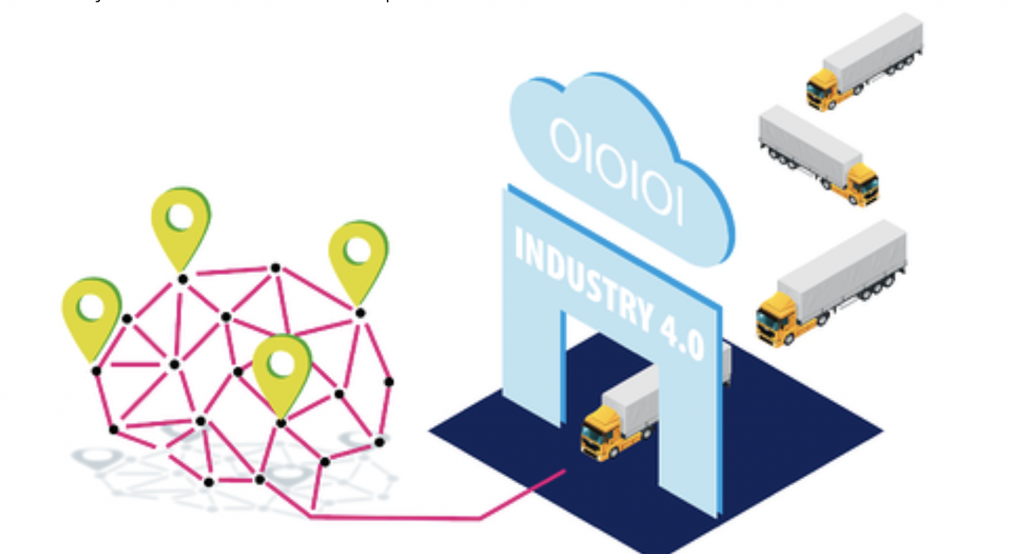
Transform Your Supply Chain Planning and Marketing Strategies with Google Cloud and SAP Integration

Transform Your Supply Chain Planning and Marketing Strategies with Google Cloud and SAP Integration
July 10, 2020 | Divyansh Meena
Blog / The “New Normal” in supply chain
Did your family wash hands today with that liquid soap to keep themselves safe from the COVID-19 outbreak? Look at that soap dispenser for a second, it has liquid soap, which was created by multiple other ingredients, being shipped to the manufacturer from 5 different countries. All these small blocks combined with an intelligent network of wholesalers and logistics services brought you a simple hand wash bottle.
There are a lot of investments that went in, to bring that one product in your house. Think about everything that you consume on a daily basis. We are looking at an extremely complex supply chain. Regardless of its complexity, we thought we had it all figured out. However, the pandemic took each one of us by surprise: transportation was restricted, manufacturing plants were closed and a lot more. This new normal started a chain reaction which brought an unforeseen but mega tsunami. A wave that we were not trained for.

We humans are by default wired to solve the problems. This instinct sometimes makes us fall in the trap of taking action to control a situation, which usually results in poor decision making. But that doesn’t apply in all cases. This action-taking brain programming is the reason that many of our customers have not only survived but enabled business transformation in this pandemic situation. Our AI solutions and a customer-centric team of data experts helped our customer drive digital transformation during these disruptive times. In this article we will walk you through the journey of our customers so you can win over the tsunami and grow stronger.
By now it is clear to us that the supply chain is going through a tectonic shift, where technology seems to lead to the shift to a positive and progressive transformation. When it comes to supply chain technologies, there are few key champions that are making the transformation possible:
Cloud Computing:
Cloud computing, including hybrid platforms, provides the ability to capture, process and disseminate information at scale regardless of whether it is small or big data. What cloud computing does is eradicate your handcuffs due infrastructure limitations. Cloud computing allows you to easily scale up or down.
Artificial intelligence and Machine Learning:
AI and ML are becoming integral parts of businesses at a steady peace. Eradicating human errors to bring efficiency and accuracy in the process is the main agenda for this trend. AI and ML combined with robotics is witnessing an increased adoption in manufacturing, while some businesses are leveraging this technology to manage their entire value chain from marketing to production to supply and demand planning.
Internet of things (IoT):
IoT devices that capture and transmit data over the internet are slowly becoming prevalent in the industry either in the form of being installed on products as part of standard equipment (example refrigerators and similar appliances used in households) or used in the manufacturing process. These devices along with capabilities such as IoT on-the-edge help capture data which can then be collected using the cloud computing capabilities.
Cyber physical systems:
A cyber physical system is a marriage between everything that is defined above and a physical system. Industry 4.0 , a concept of complete autonomous manufacturing, is not science fiction anymore, it is slowly becoming a reality. This particular technology trend will be adopted at scale as businesses need to ensure their workers safety in the pandemic situation.

All this sounds logical and tempting from a business standpoint, but you are correct if you say “ It is easier said than done”. Just like you, there are many others who have challenges in implementing these transformations to their existing infrastructure. Here are top four challenges that you might face while implementing supply chain transformation at your organization:
Lot of new technology choices and lack of familiarity with the same:
As a result, many manufacturing leaders feel that launching a Supply Chain Transformation strategy is a complicated process as it requires an extra investment in resources, especially time.
Unable to determine ROI:
Without having too many reference points to align themselves to, many executives and leaders in the industry feel like they are unable to achieve a positive ROI from Supply Chain Transformation related initiatives. As a consequence, it might be challenging to get the support needed while ensuring funding.
Worried about change management:
Any technology change requires proper change management for desired adoption within the organization. With so many emerging and disruptive concepts and technologies, most executives and leaders feel that they are not well prepared to deal with this challenge.
Cultural, ethical and related concerns:
Concerns related to cultural aspects are on the minds of many executives and leaders as technologies stretch perceptions arising from cultural norms. Concerns range from unemployment, human and artificial intelligence interactions, avoiding/controlling mistakes made by AI-ML to security (example how to prevent malicious use of AI-ML).

Many businesses and industries are stepping out of our comfort zone, as there is a strong need to innovate to keep moving forward. Change is always uncomfortable but we all have experienced that the survivors of the Change process emerge as leaders. Behind every successful technology transition there is always a well-managed change management plan. Here are a few things that you can prepare for transforming the supply chain:
Cultural aspect:
With the COVID-19 scenario being so unique, the cultures of various enterprises are being put to test in many ways. Culture is what people do when no one is watching them and we have a scenario when the majority of the workforce is now working remote for these few weeks.
Collaboration among functions:
This is correlated to the cultural aspect. Different departments and functions need to come together and work as one unit to stay afloat. Prioritizing initiatives that are seen as corporate over a department initiative usually becomes a sensitive issue. Preparing for breaking down these barriers by ensuring that incentives are aligned across organizations is important.
Ethical concerns.
Security of information being stored on the cloud is still a concern among some leaders in the industry. Taking steps to keep reinforcing the compliance of the public cloud providers.(example GCP or Google Cloud Platform). Additionally, related security and other standards are important and should not be underestimated.

Supply chain management is a very action-packed function which might have wired you for taking action immediately after reading this article. It is suggested that you take a deeper look at the discussion by reading this free white paper drafted by our supply chain and AI experts: Read Supply Chain Transformation white paper
Also, we are always happy to hear from you. Please send all your queries to contact@pluto7.com